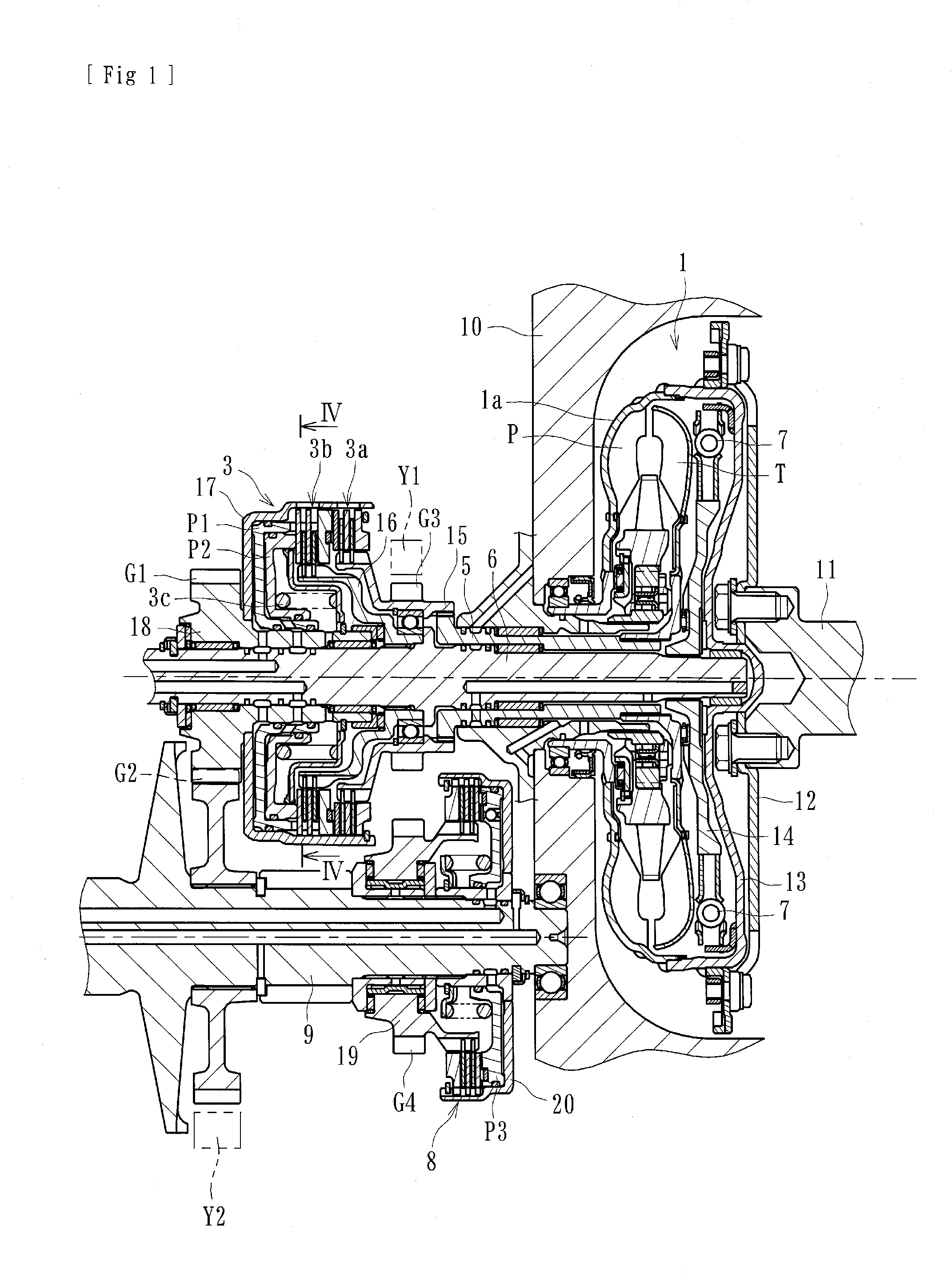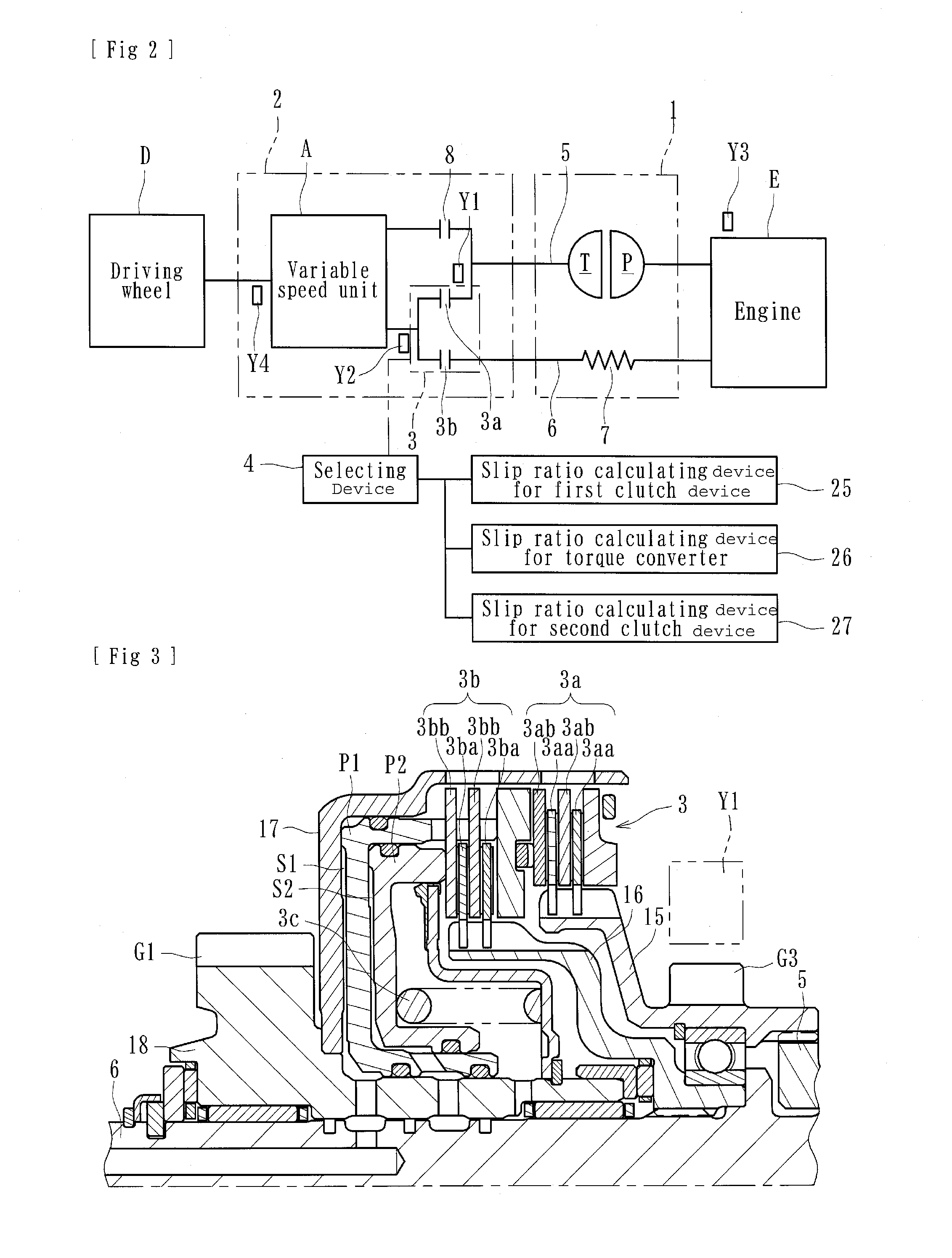Power transmitting apparatus
a power transmitting apparatus and power technology, applied in the direction of mechanical actuated clutches, mechanical apparatus, clutches, etc., can solve the problems the loss of some power transmitting efficiency, and the inability to reliably perform the ineffective stroke reducing control, so as to achieve the effect of reducing the starting performan
- Summary
- Abstract
- Description
- Claims
- Application Information
AI Technical Summary
Benefits of technology
Problems solved by technology
Method used
Image
Examples
Embodiment Construction
An embodiment of a power transmitting apparatus can be configured to transmit or cut-off the driving force from an engine (driving source) of an automobile (vehicle) to or from the wheels (driving wheels). Such an apparatus can include, with reference to FIGS. 1 and 2, a torque converter 1, a clutch mechanism 3, a selecting device 4, a first driving shaft 5, a second driving shaft 6, a damper mechanism 7, a third clutch device 8, a slip ratio calculating device 25 for a first clutch device, a slip ratio calculating device 26 for the torque converter, and a slip ratio calculating device 27 for a second clutch device.
An embodiment of a power transmitting can further comprise a speed sensor Y1 which can serve as an “input-side measuring means”, a speed sensor Y2 which can serve as an “output-side measuring means”, a speed sensor Y3 which can serve as an “input-side measuring means for the second clutch device”, and a speed sensor Y4 configured to detect a speed of a vehicle. The above ...
PUM
 Login to View More
Login to View More Abstract
Description
Claims
Application Information
 Login to View More
Login to View More - R&D
- Intellectual Property
- Life Sciences
- Materials
- Tech Scout
- Unparalleled Data Quality
- Higher Quality Content
- 60% Fewer Hallucinations
Browse by: Latest US Patents, China's latest patents, Technical Efficacy Thesaurus, Application Domain, Technology Topic, Popular Technical Reports.
© 2025 PatSnap. All rights reserved.Legal|Privacy policy|Modern Slavery Act Transparency Statement|Sitemap|About US| Contact US: help@patsnap.com



